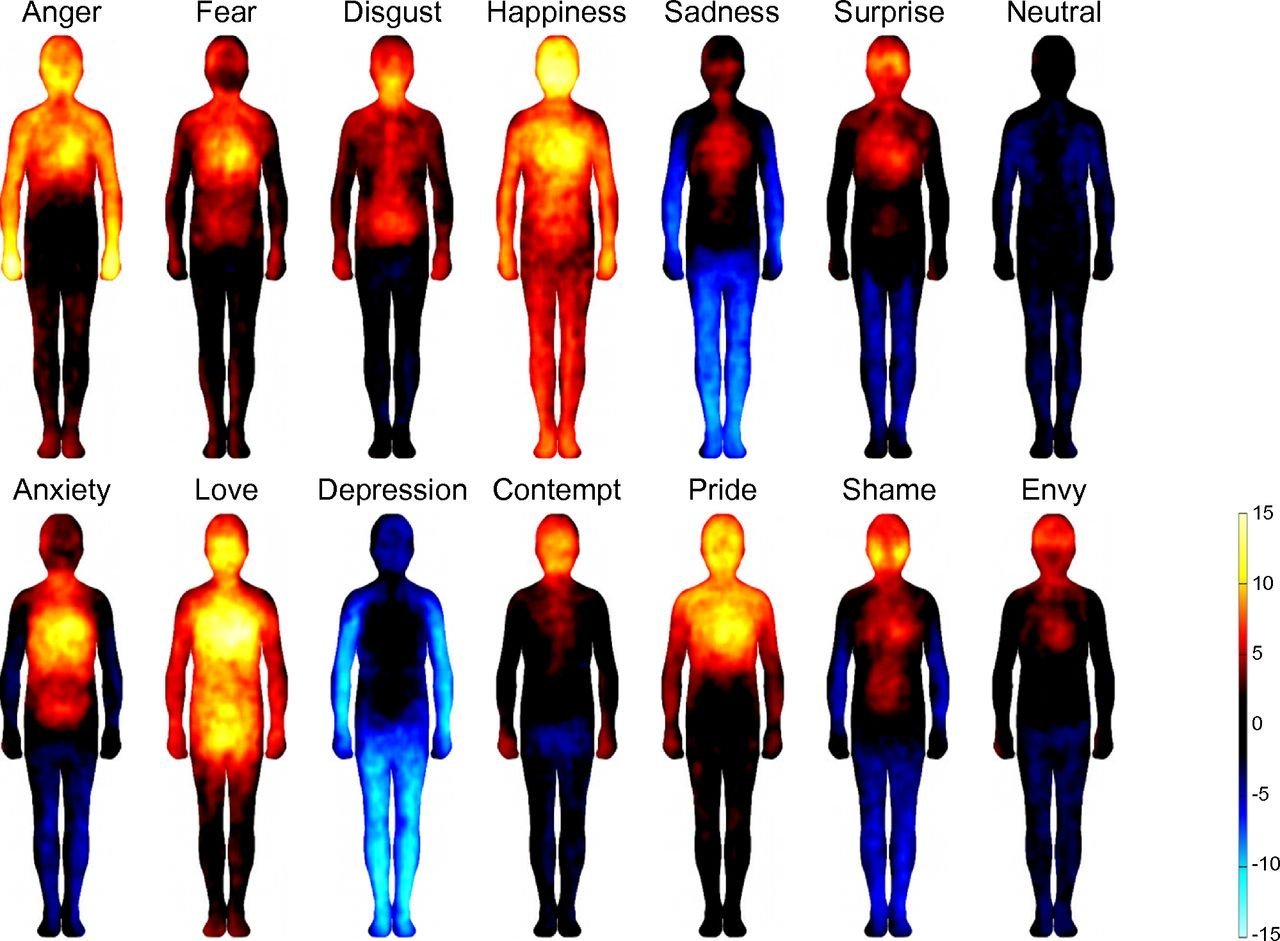The nervous system and emotions
The greatest thing then, in all education, is to make our nervous system our ally as opposed to our enemy.
—William James
Understanding the Nervous System
Our nervous system and emotions are deeply connected, with each influencing how we feel and act.
When we're stressed or in danger, our body reacts with physical signs – tense muscles, a racing heart, freezing, and urges to flee, appease, or not exist. These are fight, flight, fawn, freeze, and flop automatic reactions, guided by our nervous system. By tuning into signals, like tightness in the chest, a restless feeling or a fuzzy not-quite-here feeling, we can better understand and eventually direct our emotional state. Increasing our awareness and curiosity for our physical reactions is a first step toward making our nervous system our ally, managing emotions and finding balance.
—>Remember how the nervous system is divided into two main parts?
Central Nervous System (CNS): The brain and spinal cord, which process information, thoughts, and perceptions, directly influencing our emotional responses.
Peripheral Nervous System (PNS): A network of nerves connecting the CNS to the body, including the autonomic nervous system, which regulates involuntary functions like heart rate, breathing, and digestion.
We will now focus on the autonomic nervous system.
Autonomic Nervous System: SNS and PNS in Growth and Survival and Responses
The Sympathetic Nervous System (SNS):
In growth states, the SNS supports engagement, motivation, and drive. It energises the body for activities such as problem-solving and goal achievement, and enhancing focus and persistence (linked to emotions such as passion, excitement, curiosity and confidence). However, the SNS is commonly known for its role in survival responses, which activate with perceived threat; increasing heart rate, muscle tension, and alertness (linked to emotions like anxiety, anger, and fear).
Parasympathetic Nervous System (PNS):
Known as the rest and digest system, the PNS promotes relaxation, recovery, and emotional balance. During growth states, the PNS supports activities that foster relaxation, social bonding, and overall well-being, helping us feel calm, safe, and connected. In extreme survival situations, the PNS can trigger the flop or play dead response, leading to a sense of collapse, fatigue, or shutdown, often accompanied by the release of endogenous opioids to numb distress.
Flop (Play Dead): This is mainly controlled by the PNS. When your body feels there’s no way out—fighting, fleeing, fawning or freezing doesn’t work—it shuts down to protect itself. This is why you might feel heavy, exhausted, or disconnected, as your body goes into a state of collapse.
In both the below responses, the SNS is in charge, creating physical changes, connected to emotions, that push you to act quickly in response to a threat.
Fight: The SNS kicks in to prepare your body to confront a threat. You might feel a rush of emotions like anger, frustration, or irritation. Your muscles tense, your heart beats faster, and you get a burst of energy. This is your body gearing up to defend itself.
Flight: Also driven by the SNS, this response makes you want to escape the situation. It comes with emotions like fear, anxiety, or panic. Your heart races, your breathing quickens, and you feel a strong urge to get away. Your body is filled with energy to help you run or hide from the danger.
In recent years, we've learned that our automatic reactions to threats are more complex than just the SNS’s fight or flight.
We now know they also include: Fawn, freeze and flop (flop was just covered above under PNS). Fawn, freeze and flop responses often occur in situations where fighting or fleeing isn’t possible.
Unlike the fight and flight responses, which are mainly driven by the SNS, fawn and freeze involve a mix of both the SNS and the PNS.
Here’s a breakdown of Fawn and Freeze:
Fawn: In this response, the SNS activates because of a perceived threat, but instead of fighting or fleeing, you aim to appease the threat. Here, the PNS works to keep you calm and focused on reducing conflict. You might feel anxious, overly apologetic, or eager to please. The fawn response is your body's way of trying to create safety through social connection or by making others feel at ease.
Freeze: This response starts with the SNS kicking in, preparing the body to act, much like fight or flight. However, when action feels impossible, the PNS takes over, causing you to "freeze" or become immobilised. During this state, you might feel numb, stuck, or disconnected, even though your mind is still on high alert. Common emotions include fear, shock, or feeling overwhelmed.
In summary, fawn, freeze, and flop are complex responses involving both the SNS (which creates initial alertness and readiness) and the PNS (which brings about immobilisation, calming, or shutdown). These reactions show how our nervous system adapts to handle various threats beyond just fighting or fleeing.
Exercises for activating the growth responses of the SNS and PNS
One of the clearest ways to build growth in your SNS and PNS is through targeted practices. The more you practice, the better you get.






